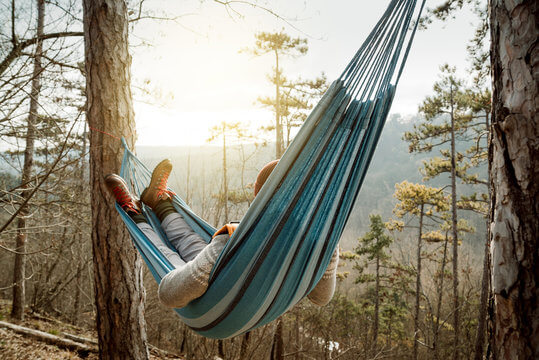Embrace the allure of the great outdoors with the ultimate camping companion: the camping hammock. As you prepare for your next outdoor adventure, consider the unmatched comfort, versatility, and simplicity that hammock camping offers. In this comprehensive guide, we’ll unravel the secrets to selecting the perfect hammock, mastering setup techniques, and ensuring optimal comfort and safety during your camping excursions. Whether you’re a seasoned outdoor enthusiast or a novice camper, discovering the world of camping hammocks promises to elevate your outdoor experience to new heights, quite literally.
Embrace the Elevated Experience:
A Comprehensive Guide to Camping Hammocks
Camping hammocks offer a unique blend of comfort, versatility, and simplicity that can enhance any outdoor adventure. Whether you’re a seasoned backpacker or a weekend warrior, incorporating a hammock into your camping gear can revolutionize your outdoor experience. In this comprehensive guide, we’ll explore everything you need to know about camping hammocks, from choosing the right one to maximizing comfort and safety during your outdoor excursions.
Understanding Camping Hammocks:
- What is a Camping Hammock? – A camping hammock is a lightweight, portable sleeping system that suspends between two anchor points, such as trees or poles, providing a comfortable and elevated sleeping surface.
- Benefits of Camping Hammocks – Camping hammocks offer several advantages over traditional tents, including:
- Lightweight and compact design for easy transportation.
- Versatility to set up in various terrains, including rocky or uneven ground.
- Enhanced ventilation and airflow, keeping you cool and comfortable during warm weather.
- Minimal impact on the environment, as hammocks don’t require flattening vegetation or disturbing the ground like tent camping.
Choosing the Right Camping Hammock:
- Considerations for Selecting a Hammock – When choosing a camping hammock, consider factors such as:
- Hammock size and weight capacity to accommodate your body size and sleeping preferences.
- Material and construction for durability, weather resistance, and comfort.
- Suspension system, including straps or ropes, for easy setup and adjustment.
- Additional features such as bug nets, rainflys, and gear pockets for added convenience and protection.
Setting Up Your Camping Hammock:
- Selecting Suitable Anchor Points – Look for sturdy trees or poles spaced approximately 10 to 15 feet apart to hang your hammock securely.
- Proper Suspension System – Use adjustable tree straps or suspension ropes to attach your hammock to the anchor points, ensuring a secure and level setup.
- Achieving the Right Sag – Aim for a slight sag or curve in your hammock when properly hung, allowing for a comfortable and supportive sleeping position.
- Consider Environmental Impact – Avoid damaging trees or vegetation when setting up your hammock by using tree-friendly straps and following Leave No Trace principles.
Maximizing Comfort and Safety With Camping Hammocks:
- Choosing the Right Sleeping Position – Experiment with different sleeping positions, including diagonal or flat, to find the most comfortable and supportive posture for your body.
- Using Insulation and Protection – Add insulation layers such as sleeping pads or underquilts to stay warm and comfortable in cooler temperatures. Consider using a bug net or rainfly to protect against insects and inclement weather.
- Ensuring Proper Weight Distribution – Distribute your weight evenly in the hammock to prevent tipping or flipping, especially when shifting positions during sleep.
- Checking for Hazards – Inspect your hammock and suspension system for signs of wear or damage before each use, and avoid hanging your hammock near hazards such as sharp objects or unstable terrain.
Additional Camping Hammock Tips and Considerations:
- Practice Setting Up Your Hammock – Familiarize yourself with the setup process before your camping trip to ensure a smooth and efficient setup in the field.
- Bring Backup Shelter – While hammocks offer excellent comfort and versatility, it’s always wise to bring a backup shelter, such as a lightweight tent or tarp, in case of unforeseen circumstances or if hammock camping isn’t feasible.
- Respect Campsite Regulations – Check local regulations and guidelines regarding hammock camping, including any restrictions on anchor points or camping locations within designated areas.
- Leave No Trace Principles – Practice Leave No Trace principles by minimizing your impact on the environment, including proper waste disposal, respecting wildlife, and leaving your campsite as you found it.
Conclusion: Camping hammocks offer a refreshing alternative to traditional tent camping, providing comfort, versatility, and a closer connection to nature. By choosing the right hammock, mastering setup techniques, prioritizing comfort and safety, and adhering to Leave No Trace principles, you can enjoy a rewarding and memorable outdoor experience with your hammock as your trusty companion. So pack your hammock, hit the trail, and elevate your camping adventures to new heights!
Join the E3 Camping Membership today and become a part of a vibrant community that shares your passion for RV adventure. Together, we can make your dreams of RVing and camping a reality, while embracing the spirit of empowerment. When you sign up, you get instant access to our magazines, 200+ lessons and courses to be a better camper and RVer, tools, product discounts, events, a HUGE community of campers and RVers around the country, E3TV episodes, articles, and many other amazing things.

